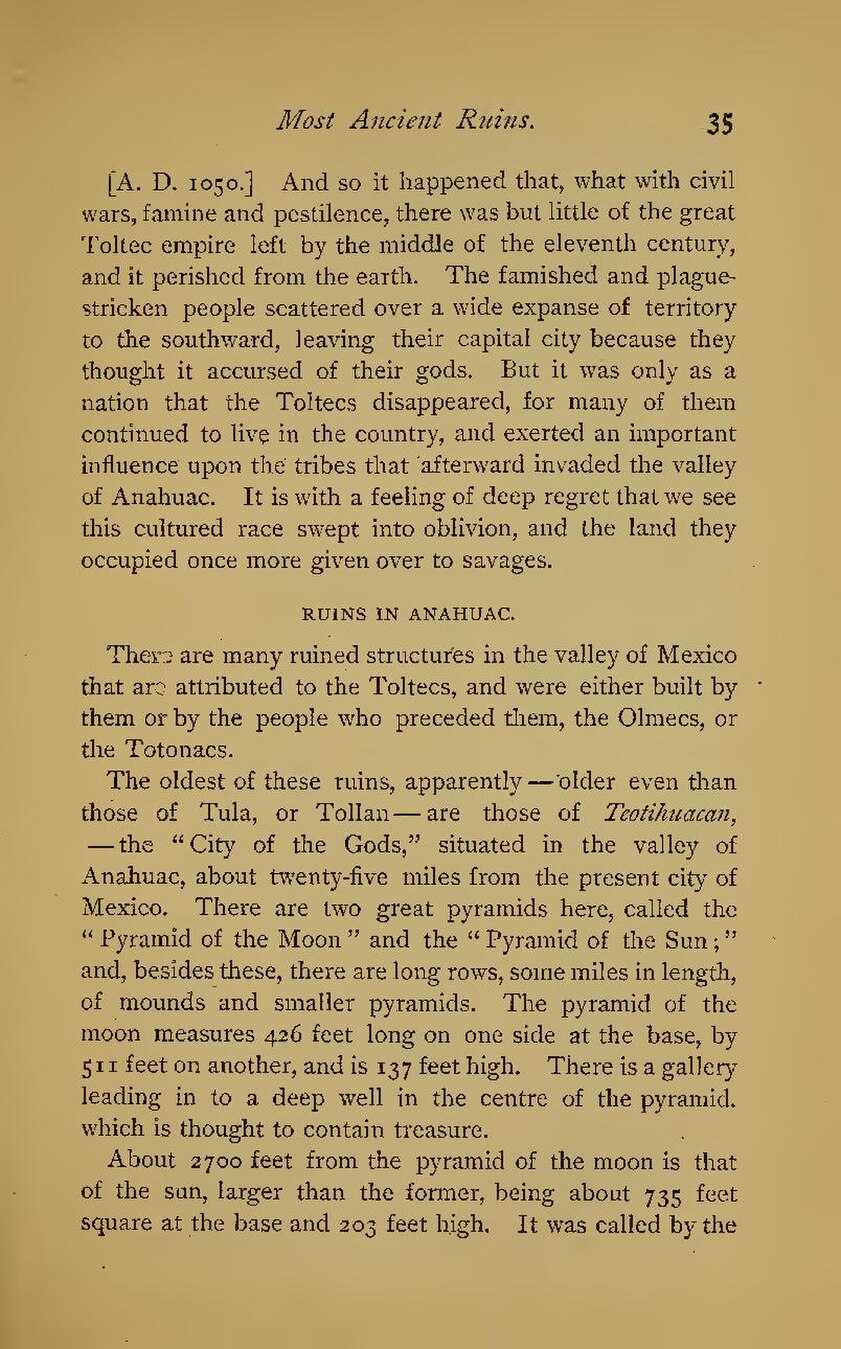[A. D. 1050.] And so it happened that, what with civil wars, famine and pestilence, there was but little of the great Toltec empire left by the middle of the eleventh century, and it perished from the earth. The famished and plague-stricken people scattered over a wide expanse of territory to the southward, leaving their capital city because they thought it accursed of their gods. But it was only as a nation that the Toltecs disappeared, for many of them continued to live in the country, and exerted an important influence upon the tribes that afterward invaded the valley of Anahuac. It is with a feeling of deep regret that we see this cultured race swept into oblivion, and the land they occupied once more given over to savages.
RUINS IN ANAHUAC.
There are many ruined structures in the valley of Mexico that are attributed to the Toltecs, and were either built by them or by the people who preceded them, the Olmecs, or the Totonacs.
The oldest of these ruins, apparently—older even than those of Tula, or Tollan—are those of Teotihuacan,—the "City of the Gods," situated in the valley of Anahuac, about twenty-five miles from the present city of Mexico. There are two great pyramids here, called the "Pyramid of the Moon" and the "Pyramid of the Sun;" and, besides these, there are long rows, some miles in length, of mounds and smaller pyramids. The pyramid of the moon measures 426 feet long on one side at the base, by 511 feet on another, and is 137 feet high. There is a gallery leading in to a deep well in the centre of the pyramid, which is thought to contain treasure.
About 2700 feet from the pyramid of the moon is that of the sun, larger than the former, being about 735 feet square at the base and 203 feet high. It was called by the
